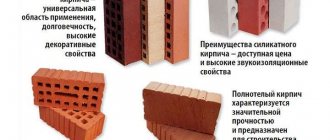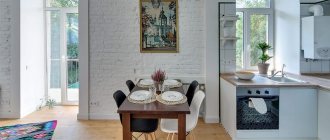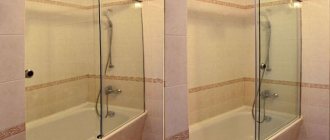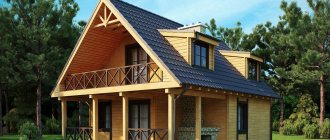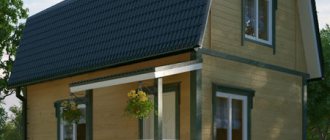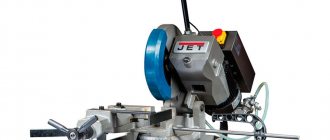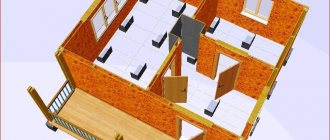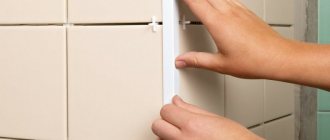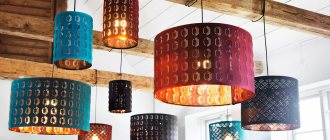@Karkasnii_dom Soundproofing is a labor-intensive and time-consuming process, since you need to select materials, technologies, and carry out the arrangement work itself, which takes a lot of time. But this is the only way to protect your home from extraneous sounds from the outside, as well as create privacy for all rooms, since no noise will spread beyond the walls of the room. In a home environment, you want to rest, relax and gain strength, but it is not always possible to achieve such comfort, since the lack of additional sound insulation disrupts the overall comfort of the space. Therefore, complete sound insulation in a frame house when using special means and methods.
Ceiling soundproofing
To protect the ceiling of a frame house from extraneous sound, it is recommended to use special soundproofing panels that can contain sounds and create a comfortable space. They will be able to create a multi-level ceiling covering, making the interior more sophisticated and practical. They can be purchased ready-made, or you can create them yourself, providing the appropriate technical and practical features.
@Potolok
Manufacturing requires plasterboard, metal profiles for assembling the structure, sound-absorbing products, brackets, and screws. Correct combination ensures convenient, high-quality performance of the assigned work.
The metal profile serves as a means for assembling the frame structure on which all products will be “hung” as part of sound insulation. And between the wall and the frame, a layer of vibration-absorbing product must be laid so that the comfort in the building is not disturbed in the future. Cork, rubber tape, and foam polystyrene are suitable for this purpose. Only after the structure is ready can you begin installing the sound-absorbing product. There are different types of coatings, so they must be installed in accordance with established rules in order to avoid operational discomfort in the future.
Note! After installing the insulation, it is necessary to treat the seams with sealant so that they do not become a place that allows moisture to pass through, disturbing the temperature space.
Soundproofing walls
Effective sound insulation of a frame house will only be if all walls are carefully treated with soundproofing panels, thanks to which you can count on the practicality and ease of use of the house.
Many are of the opinion that for good sound insulation the use of insulation alone will be enough, but, as practice shows, it will not be possible to achieve the desired effect. Therefore, the inner surface of the walls must be treated with sound-absorbing materials that can guarantee a comfortable space. The standard option is the use of mineral wool and plasterboard, which achieves special efficiency. But the connections must be sealed to protect against vibration waves, as they can disrupt the overall comfort of the room. The number of layers, depending on the desired type of sound insulation, is selected individually.
@Steni
In addition to standard mineral wool, felt and plasterboard can be used to create a multi-level soundproofing structure. But it is best to select effective panels of small thickness to avoid “overloading” the walls.
External decorative design of walls using panels or lining allows not only to create a comfortable sound space, but also to emphasize the thermal insulation in the room.
Important! To equip a frame house, only environmentally friendly materials should be used to avoid hygienic discomfort.
More information about ZIPS panel systems
Thanks to its complete readiness for installation on walls, the ZIPS panel system is recognized as the best material for frameless cladding. In the table we compare soundproofing ZIPS structures of various thicknesses to show what index of additional sound insulation of airborne noise the system can provide.
| Design for soundproofing walls | System Features | Thickness of frameless cladding | Additional sound insulation index |
| ZIPS-Vector | provides an initial level of protection from household noise - voices, dog barking, children's crying, low-power radio and television devices, operating range - from 125 Hz | 5.3 cm | 9-11 dB |
| ZIPS-III-Ultra | shows the highest efficiency in terms of thickness/result ratio, protects against household noise sources at a basic level, operates in the range from 100 Hz | 5.5 cm | 11-13 dB |
| ZIPS-Module | basic level of sound insulation against medium-intensity noise in residential and public buildings, for example, in restaurants, cafes and shops, range from 100 Hz | 8.3 cm | 12-14 dB |
| ZIPS-Cinema | a system that provides high-level sound insulation, used for home theaters and studios, as well as for equipping concert halls, discos, bowling alleys and other rooms with high-intensity noise, the operating range is from 80 Hz | 13.3 cm | 16-18 dB |
Useful: DIY door arch: detailed instructions
Soundproofing the floor
Floor soundproofing is usually installed in the interfloor space, since this does not take up extra space and ensures appropriate efficiency. The “floating floor” system is created to ensure uniform load distribution, and the structure is not attached to load-bearing elements, which ensures complete soundlessness.
@pol
But the flooring is installed directly on the soundproofing layer, which ensures comfort, warmth and practicality during use. And the wall coverings used to create partitions are separated by vibroacoustic pads, which ensure sound suppression. Do not be afraid of the appearance of the room, since the gasket is hidden under the baseboard, which emphasizes the originality and comfort of the room.
A valid option for a frame house would be the “insulated beams” technique, which involves carefully insulating the ceiling beams separately for the floor beams, so noise is not transmitted or spread throughout the room.
Important! The correctly chosen technique allows you not only to soundproof, but also to insulate the room.
Features of sound conductivity of wooden buildings
The porosity of wood has become the main reason for the good transmission of waves of different frequencies. Residents of a wooden house, which was not protected from noise during construction, feel like they are inside a music box, only it is not music that is heard around them, but any sounds - the sound of footsteps, a conversation, the running of a water tap, etc.
In addition, over time the tree dries out. And this makes the seams between the material more vulnerable and changes the structure of the timber itself. The insulating qualities, which were initially not high, are further reduced. Therefore, soundproofing a wooden house is especially important. There are a number of methods that solve the problem of sound insulation, but each of them should be considered separately, based on the characteristics of construction and the layout of a wooden house.
Any soundproofing work must be done directly during the construction of the house. This approach will significantly reduce the cost of materials and finances, and improve the quality of the operation.
In addition to using special construction sound absorbers, you can resort to some tricks that will reduce the noise conductivity in the room. This is primarily textiles. An abundance of curtains, carpets, upholstered furniture, and pillows dampens the noise in the room. On the contrary, metal objects, ceramics, and stone enhance sound vibrations. But still, the greatest effect is achieved by using soundproofing materials.
Sound insulation of roof, ceilings
Owners of a frame house are faced with difficulties in terms of violating the soundproofing space during rain, as it provokes the appearance of “drum rolls”. Basalt or glass wool can solve the problem, since the soft and dense structure helps prevent the occurrence of sound disturbances.
@Perekritie
You also need to install a layer of insulation between the rafters in order to maximally protect the space from the penetration of extraneous sounds and create additional thermal insulation.
Important! For insulation of rafters, fiberglass tape or impregnated felt is best suited.
Loaded vinyl or sound block
When it comes to insulating a house from sound penetration without taking up a large amount of usable space, loaded vinyl (sound block) is used. This is a modern material that combines the functions of polymer and mineral and exhibits maximum efficiency even with a thickness of 3 mm.
It can be used to soundproof partitions in a wooden house or apartment. Advantages of the film:
- elasticity;
- moisture resistance;
- sound absorption of one layer is 25 dB.
To achieve greater efficiency, you need to use an insulator in two or more layers.
Windows and doors
For better soundproofing effect, sealed double-glazed windows are used, which can guarantee comfort and convenience for residents. For a frame house, two-chamber and three-chamber double-glazed windows are ideal, since single-glazed windows cannot cope with full noise protection.
@Okna
When choosing double-glazed windows, you should take into account the distance between the profiles, and the thickness of the profile and the width of the air chambers should differ, since this ensures reliable and comfortable use without violating technological features.
As practice shows, most often consumers neglect the need for additional soundproofing of doors, although in fact this is an extremely important measure that can provide comfort and coziness. In addition, such sound insulation in a frame house allows you to create an optimal microclimate, thanks to which you can save on heating.
To protect the door frame from noise penetration, it is recommended to follow the following recommendations:
- You can eliminate all the gaps between the box and the partition using sealant.
- Doors must be sheathed with soundproofing materials, namely fiberglass, foam rubber, mineral wool or leather, which additionally adds charm to the structure.
- It would be better to glue a seal around the perimeter of the door, which eliminates the gaps between the door leaf and the frame.
- It would be a good idea to install a soundproofing threshold.
Note! Some manufacturers provide doors already complete with soundproofing materials, so there is no need to further clarify what to do to make the room more comfortable.
How else can you soundproof a frame?
For protection, they resort to non-standard, innovative materials that absorb sound. The following insulators can be used in a frame building:
- Mineral wool acoustic slabs. They have a fibrous structure that repeatedly reflects sound waves, which leads to their attenuation.
- To increase the level of sound absorption by thin partitions, vibration-damping coatings that are highly elastic are used. They contain bitumen, silicone, mineral fillers, polymer and plasticizing additives. Noise muffling can be achieved by installing an insulation layer two to three times thicker than the base.
- Elastomeric vibration damping plates. Widely used in frame construction for sound absorption of floors and ceilings. Completely muffles the noise of engineering equipment and household appliances.
Materials for noise absorption and insulation
The noise elimination procedure will combine technical features only if the material is chosen correctly. Due to the development of production capabilities, each buyer can easily choose what suits their needs.
Cork sound insulators
The material is suitable for sound insulation in terms of keeping out high-frequency noise, which could be dogs barking, screaming, or listening to music loudly. In practice, cork is used as a main or auxiliary material for insulating walls and floors.
Loaded vinyl (or sound block)
This is a dense, expensive membrane that functions not only as a sound insulator, but also as a high-quality insulation material. But the large thickness of the product can create additional difficulties, so the need is initially assessed. But at the same time, the thickness of the material provides high-quality sound protection.
ZIPS
These are structurally rigid materials that have proven themselves in the field of soundproofing frame houses. As a rule, it is used to arrange space in interior partitions, suspended ceilings and other similar structures. It is possible to glue panels under wallpaper, since their small thickness and the ability to create a perfectly even coating are considered the main advantage.
Substrates
This is a thin rolled material made from environmentally friendly and reliable raw materials, so during use it ensures comfort and ease of use. An important property is that the product does not require any effort when gluing, so the soundproofing procedure takes a minimum of time. Additionally, you will be pleased with the reasonable cost, thanks to which there is no need to overpay for popularity and brand recognition.
Fiberglass
It belongs to environmentally friendly materials that are actively used in the field of sound insulation and insulation, therefore ensuring quality, efficiency and convenience. Boards with a middle layer are suitable for insulating partitions and roofs, but in order to avoid deformation due to exposure to moisture, additional treatment with moisture-proofing agents is required. Additionally, a non-woven fabric is used, in which glass wool is wrapped so that it does not crumble during installation, without creating inconvenience.
Foamed polystyrene
This is a popular material, but its level of effectiveness leaves much to be desired. It is presented on the market in the form of slabs or granular material, therefore, depending on the plane of work, the optimal shape can be selected. High thermal insulation qualities are combined with a low level of sound protection.
Mineral wool
Soft and semi-hard options are available. The base uses stone wool, fiberglass and slag melts, so high quality is guaranteed, along with efficiency. The material is suitable for arranging floors and roofs, as it additionally provides good protection against moisture.
What fillers are there in gypsum plasterboard partitions?
Full sound insulation of partitions includes sound-absorbing filler. Typically this is expanded polystyrene with a fire retardant in the form of a foam material with hollow, air-filled granules that are fused together. The flame retardant in the composition prevents combustion . Mineral wool, membranes made of thin fabric with pile, polyurethane foam, polystyrene foam can also be used as a filler.
When you are at the stage of choosing which is better for sound insulation - polystyrene foam or mineral wool - we advise you to pay attention to the following nuances:
- polystyrene foam insulates well, but is not a material for absorbing noise;
- mineral wool is inferior to foam plastic in thermal conductivity, but the sound absorption coefficient of mineral wool is 10 times higher than that of foamed plastic;
- foam will not help at all against airborne noise , however, under a floating screed, foam can achieve a small degree of protection against impact noise;
- polystyrene foam cannot be mounted monolithically, that is, unnecessary voids will certainly appear, but mineral wool can be laid overlapping and in several layers;
- polystyrene foam creaks when vibrating, unlike fibrous material;
- Insects and rodents do not grow in mineral wool.
Conclusion: when posing the question - is foam plastic or mineral wool better for sound insulation - we choose the second option. And if the budget allows, we install acoustic slabs using noise and vibration mounts .
